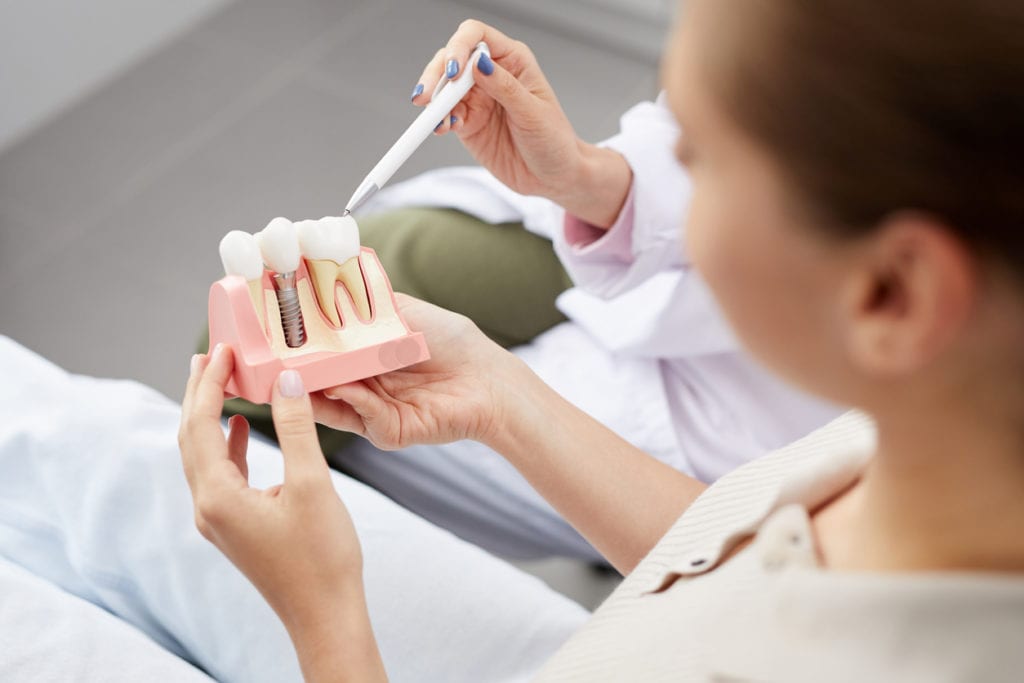Dental Implants Treatment in Gurgaon
Request a Call Back
Best Dental Implants in Gurgaon
First two sets of teeth are given by god and the third one provided by the dentist ( an Implantologist ).You can choose to get yourself a removable one or one which simulates a natural tooth i.e. IMPLANTS.
Dr. Rishi is the Best Implantologist in Gurgaon, who has been guiding and helping people with Dental Implants in Gurgaon for more than 2 decades.
Dental Implants are the anchors made of a biocompatible metal called titanium. Dental implant surgery has undergone a radical change over the years.
Using CBCT scans and restorative virtual tooth to tooth planning along with specialized training, we are able to provide guided implant placement for our patients.
Virtual/3D Models can be used to do implant placements and following restorative work can be simulated to create the ideal patient tooth to tooth plan.

Types of Dental Implants in Gurgaon at Dental Centre India
Single Tooth Implant
Multiple Teeth Implant
Denture Stabilization
Sinus Lift
Meet the Best Implantologist in Gurgaon
Dr. Rishi Dhanda is a senior Dental Surgeon in practice for the last 24 years. He is successfully running 3 private dental clinics in Gurgaon and Delhi. He passed out from KLE College of Dental Sciences, Belgaum, Karnataka in the year 1996.
Dr. Dhanda then went on to earn his Diploma in Aesthetic Dentistry from New York University in the year 2000. Dr. Dhanda is one of the foremost Implantologist of Gurgaon, Delhi/NCR, performing complex Dental Implant Surgeries, including digitally guided ones, for well over 20 years, with over 2600 Implant placements.
He is also credited with being one of the earliest practitioners of Single Visit Root Canal Treatments in Gurgaon, starting from the year 2002.

Quick Appointment
Advantages/ Benefits of getting Dental Implant
There are many advantages of Dental Implants in gurgaon and that’s the reason more and more dentists in Gurgaon are recommending them as well as more and more people are also opting for them because
- Dental Implants are more convenient
- Dental Implants are long lasting with low maintenance
- Dental Implants are balanced and improve oral health
- Dental Implants are efficient and better for chewing
- Dental implants are more comfortable
- Appearance improve with perfect dental implants
- Dental Implants improveself-esteem.
- Dental Implants improve Better speech

So, if you have a missing tooth which makes you uncomfortable then you must meet Dr. Rishi Dhanda, the best Implantologist in Gurgaon to get your glory back. It is said that prevention is better than cure.
So, even if you have slight discomfort or pain in any of your teeth, you must meet our team. Our team of best dentists in Gurgaon to get your teeth problem diagnosed in time to save your real teeth from getting damaged.
Sometimes there is a bone loss which goes undetected for a long-time which spread from one tooth to other teeth and by the time it gets detected then one may have to go through the procedure of bone grafting and multiple teeth implants.
Best Dental Implant in Gurgaon
Testimonials
FAQ's
Unlike a bridge, which requires RCT and grinding down of neighboring teeth, an Implant is inserted into the bone and takes direct support from it like a natural tooth.
Anchoring the implant into the bone produces mechanical changes which help in more bone formation.
Titanium is the material of choice for implants. It is biocompatible and very well tolerated as well as safe for the body.
Smoking delays the healing of tissues after implant placement and is hence discouraged after the procedure.
Surgical procedures usually do not have a success rate of 100% but the failure rate is very low. Depending on the surgeon’s expertise and good patient selection, failure usually does not occur.
The procedure is done under local anesthesia and is hence not painful. After the procedure, the patient takes painkillers for a few days which keep him comfortable post operatively too.
